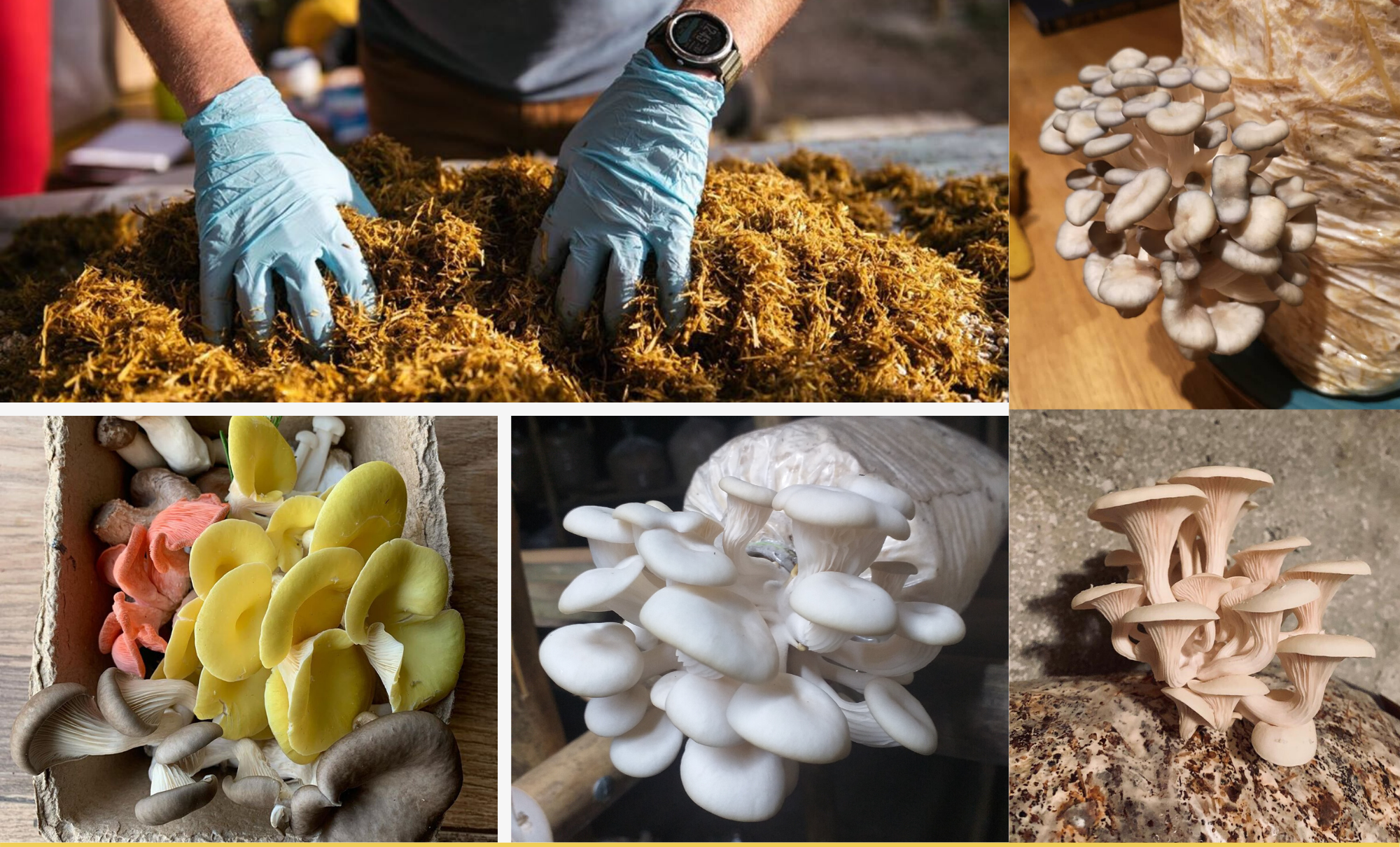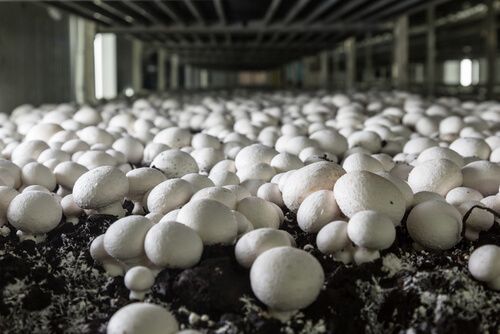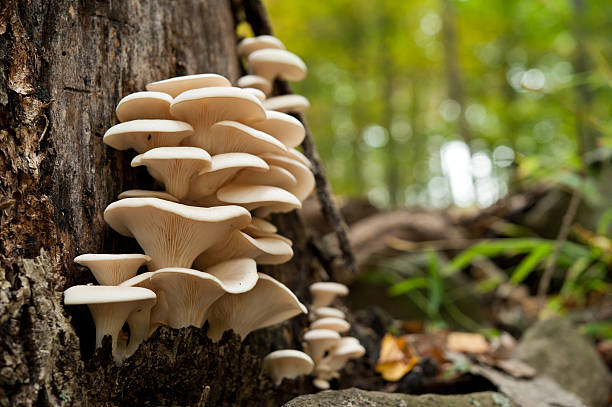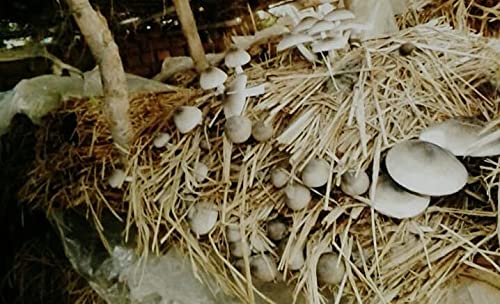
Mushroom farming is basically the business of growing fungi. Nowadays, mushroom cultivation is the most productive and profitable business. It is getting popular gradually because, in a short time, it converts farmers’ hard work into profit. Farmers use mushroom cultivation as an alternate source of money. Mushrooms are tasty to eat. You can add it to your soup, vegetables, and stews, and can top it on your favourite pizza.
Mushroom production is mainly done in Uttar Pradesh, Kerala and Tripura. Mushrooms are not only delicious in taste, but it also has many other qualities that include proteins, fibres, potassium, copper, zinc, selenium, magnesium, and cancer-fighting nutrients.
The mushroom cultivation process is the easiest farming. In the mushroom farming business, you can earn more profit with less investment. We here come with the most popular topic of Mushroom harvesting. This blog provides you with fully detailed knowledge regarding mushrooms.
Types of Mushroom Cultivation
There are three major types of mushrooms as below:
- Button mushroom,
- Oyster mushroom,
- Paddy straw mushrooms.
These Mushrooms have separate importance and grow in different styles by using unique techniques and methods. To grow mushrooms, a special bed is prepared that is called a compost bed.
You can easily grow mushrooms. It is the best way to earn profit as the cost of mushroom cultivation is too low. We are here to show you all the details regarding the stages of mushroom growth. Let’s know all the information about it and increase your income by producing mushrooms.
Mushroom Harvesting
At present, mushroom harvesting is the most profitable business idea. This practice is spreading all over the world rapidly. Mainly among the new generation farmers who want to earn more profit in less time. You can find out below easy steps to harvest mushrooms.
1. Button Mushroom

Here is the following process to grow button mushrooms:
1st Making Compost: Making compost is the first step in growing button mushrooms. This process is done in the open. Button mushrooms are grown on clean platforms made from concrete. Compost is prepared in 2 types which are given below:
(a) Natural Compost
Natural compost is the things which come from nature. Some natural compost is wheat straw, horse dunk, gypsum and poultry manure used for making compost for button mushrooms. Blend all the elements well and spread them well on the compost yard. After this, spray water on the prepared compost to wet it.
(b) Synthetic Compost
We required urea, gypsum, bran, wheat straw, and ammonium nitrate/ ammonium sulphate for synthetic compost. In this process, firstly cut the staw about 8-20 cm in length. Now spread an equally fine layer of cut straws on the compost and spray water on it. Now you have to mix all the things well that are calcium nitrate, urea, gypsum and bran.
2nd Fill the Compost in a Tray
At the time of preparation, the colour of the compost turned dark brown. Always the compost should not be too wet or dry at times when we are spreading it on the tray. If the compost is dry, then spread a little amount of water on it. The compost tray must be made of softwood, and it is best to use a tray 15 to 18 cm deep. Otherwise, use the tray according to your comfort.
3rd Spawning
The next step in the process of growing button mushrooms is Spawning. It is the process of sowing mycelium into the beds. There are 2 ways to spawn: 1st is you have to spread compost on the tray bed, and the other one is blending mycelium with compost before spreading it on the tray. You have to cover the tray with newspaper after sprinkling the water and spawning which maintains moisture in the tray.
4th Casing
Now, you have to cover the tray with a thick layer of soil. You can make this soil by blending garden soil and rotten cow dung. This soil is known as casing soil. This casing soil has a good water-holding capacity.
5th Harvesting Mushrooms
The next step in button mushroom farming is harvesting. After 15 to 20 days of casing and 35 to 40 days of spawning, mushrooms’ pinheads start appearing. Now, you have to hold the head firmly and twist it softly from the soil.
Finally, it is not advisable to store mushrooms in the refrigerator for more than 3 to 4 days. Use a moist towel to cover mushrooms that make them long-lasting.
2. Oyster mushroom

Oyster mushroom is super tasty to eat, and it has the simplest production process. This type of mushroom does not require conditions like button mushrooms. And, oyster mushroom consists less fat which is why oyster mushroom is suggested by doctors to diabetic and blood pressure patients.
Following is the process of growing oyster mushrooms:
1st Process of Substrate
You can produce Oyster mushrooms with minimum effort as compared to button mushrooms. To grow oyster mushrooms, you can use banana tree waste, cotton waste, and paper waste. You can grow oyster mushrooms in rectangular blocks and polythene bags.
(a) Rectangular blocks
Take a rectangular block of the wooden frame without a base and with the help of a polythene sheet, make a base by laying down a thin bed of paddy straw. Remember that it should be wet. Now, spread spawns all over it, and add another thin sheet of paddy straw to it. Redo this same process 3 to 4 times with a paddy straw layer on the top.
(b) Polythene bags
Now, you have to cut paddy straws into tiny pieces and properly wet pieces with water. The excess water will separate from the straw and be put it in a polythene bag consisting of small holes for air circulation. And last, blend the spawn with paddy straw in a 0.2:6 ratio.
2nd Process of Spawning
After 10 to 12 days, you find out the appearance of small buds and the straw gets locked in itself. Now, is the best time to remove the polythene and put it on shelves. You have to water that twice a day.
At last, will follow the same process as button mushrooms for harvesting and storing the oyster mushrooms.
3. Paddy Straw Mushrooms

Paddy Straw Mushrooms are the most popular mushrooms eaten in the world. It is mostly grown in Southeast Asia. It is the most profitable activity among all the types, to grow paddy straw mushrooms you required less investment. Paddy straw mushrooms are called straw mushrooms. Check out below paddy straw mushroom cultivation procedure.
- Spawning
To grow mushroom farming, you have to soak paddy straws. When they are fully spawned, they are called straw spawn.
- Bedding
Now, you have to prepare a strong base of bricks and soil strong enough to hold all the weight. Place eight bunches of straws with four on each side and spread spawns on the edges of the straws. Now, redo these steps continuously.
- Mushrooming
In about 15 to 16 days, mushrooms start appearing. At last, follow the same process for storing the mushrooms.
Cost of Mushroom Cultivation
Nowadays, mushroom industries in India are growing rapidly in terms of market value, demand and beneficial effects. Many young farmers want to grow mushrooms and the main query related to mushroom farming is ‘what is the cost required to grow mushroom cultivation?’. Here, we have an estimated answer to this question.
The total cost of mushroom cultivation in India is approx Rs. 1,50,000. That includes Scrap Wooden Shelves (Rs. 20,000), Cost of Construction for rooms (Rs. 1,25,000), and other Miscellaneous Costs (Rs. 5000).
Mushroom Farming Training
At present, the government is focusing on Indian agriculture, and they provide training to farmers for better and effective productivity. Joining mushroom cultivation training by the government is the best opportunity if you are interested in Mushroom farming. With that, in this tech-savvy world, you can take mushroom cultivation training online, which is the easiest way to learn.
These are all about Mushroom farming in India and possess to grow different types of mushrooms. In last, we show where to take Mushroom Farming Training. I hope you got all the detailed information regarding mushroom farming in India. Now, you can easily grow mushrooms and earn a lot of profit. For more information, stay connected with TractorJunction.
Financial and Business expert having 30+ Years of vast experience in running successful businesses and managing finance.





